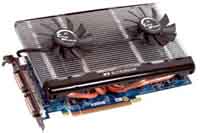A note on Imaging drives, Windows has tools built into it that do such a thing, though I've never learned to use them, nor do I know how the images are maintained.
Disk Wizard will provide a clean image you can restore to any suitable HDD, all you need is the Disk Wizard CDROM boot disk.
The CDROM boot disk provides a real bonus if you are thinking it looks awkward. When an OS is running, it locks files and it doesn't want to image properly, there may be programs that get around this, but a pure image of an OS that's NOT running is RELIABLE. The Disk Wizard boot disk loads a mini OS so you can image the OS drive in it's pure state, while it's dormant.
If you build an onboard solution Raid 0 array, use the max stripe size, which is 128k usually, if you build an array using a dedicated RAID card, you may want to read the instructions

If you use onboard RAID and you have 2 seperate raid controllers, perhaps use the fastest controller if you can determine what that is. I'm not sure, but some intel based boards have onboard raid in the chipset, and they also have a Jmicron raid controller or some other brand of third party raid support. It's likely all much of a muchness, but it bears investigation if you have a choice of controller to use.
Raid can sound a bit daunting to start with, but once you've set it up, you realise it's no big deal at all, and it's transparent, acting like a normal drive, but bigger and faster!
Once you know how, you can set a raid array in a couple of minutes.
SSD drives will hopefully soon render all my "knowledge" of such things as useless, but until they get realistic.....
PS. I just edited all my posts, where I had said "Seatools" before, I changed it to "Disk Wizard" which is more accurate, very sorry if you got lost out there, my bad.


 Mainboard: Asus P5K-Premium, CPU=Intel E6850 @ x8x450fsb 3.6ghz, RAM: 4gb PC8500 Team Dark, Video: NV8800GT, HDD: 2x1Tb Samsung F3 RAID-0 + 1Tb F3, PSU: Antec 550 Basiq, OS: Win7x64, Display: 24&
Mainboard: Asus P5K-Premium, CPU=Intel E6850 @ x8x450fsb 3.6ghz, RAM: 4gb PC8500 Team Dark, Video: NV8800GT, HDD: 2x1Tb Samsung F3 RAID-0 + 1Tb F3, PSU: Antec 550 Basiq, OS: Win7x64, Display: 24&


